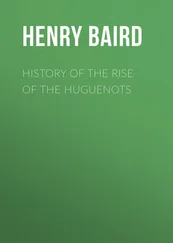[18]Maldonado, op. cit. , pp. 23, 52, 71, 73.
[19]Clemencin, Elógio de Doña Isabel, p. 127.
[20]Castillo, Crónica de Enrique IV, cap. cliii.
[21]Pulgar, Claros Varones de España (Elzevir, 1670, p. 6).—Castillo, op. cit. cap. cxliii.—Saez, Monedas de Enrique IV, pp. 3, 7, 23 (Madrid, 1805). At the Córtes of Segovia, in 1471, Henry ordered the destruction of all the private mints, but it is not likely that he was obeyed (Córtes de Leon y de Castilla, III, 830, Madrid, 1866). Garcia López de Salazar, a contemporary, tells us that the gold Enriques were originally 23½ carats fine, but those struck in the royal mints gradually fell to seven carats, while the private mints made them what they pleased.—Saez, p. 418.
Spanish coinage is an intricate subject, and as some knowledge of it is necessary for the proper understanding of sums of money referred to hereafter, I have given a brief account of it in the Appendix.
[22]Córtes de los antiguos Reinos de Leon y de Castilla, IV, 59–68.—Novisima Recopilacion, Lib. III, Tit. v, ley 10, 11.—Barrantes, Ilustraciones de la Casa de Niebla, Lib. VIII, cap. xxii.—Garibay, Compendio Historial, Lib. XVIII, cap. xvi.—Don Clemencin ( op. cit. p. 146).
At the death of Henry IV, in 1474, the royal revenue had fallen to about ten million maravedís. By 1477 it increased to 27,415,626, by 1482 to 150,695,288, and in 1504, at the death of Isabella, it was 341,733,597.—Clemencin, p. 153.
[23]Miscelánea de Zapata (Mem. hist. español, T. XI, p. 332).
[24]L. Marinæus Siculus de Reb. Hispan. (R. Beli Rer. Hispan. Scriptt, p. 774).—Damiani a Goes Hispania (Ibid. p. 1237).
[25]Pulgar, Claros Varones, Tit. xx; Letras No. iii.—Fléchier, Histoire du Cardinal Ximenes, II, 291 (Ed. 1693).
The Córtes of Toledo, in 1462, among their grievances, include the factious turbulence of the clergy—“bien sabe vuestra alteza commo algunos obispos e abades e otras eclesiasticas personas se han fecho y de cada dia se fazen de vandos, e algunos dellos tanto e mas escandalizan vuestras cibdades e villas que los legos dellas.”—Córtes de Leon y de Castilla, III, 711 (Madrid, 1866).
[26]Francisco de Medina, Vida del Cardenal Mendoza (Mem. hist. español, T. VI, pp. 156, 190, 193–4, 255, 293–4, 297, 304).
[27]Concil. Arandens. ann. 1473, cap. 3, 6, 9, 10, 11, 12, 13, 14, 15, 20, 25 (Aguirre, V, 344–50).
[28]L. Marinæi Siculi de Rebus Hispan. Lib. XIX.—Raynald. Annal. ann. 1483, n. 15; ann. 1485, n. 26.
[29]History of the Inquisition of the Middle Ages, Vol. II, pp. 180 sqq.
[30]Romancero del Cid, pp. 245, 269 (Francofurto, 1828).
[31]Ordenanzas Reales, Lib. VI, Tit. ix, ley 21.—Villanueva, Viage Literario, XVII, 256.
[32]Constitutions de Cathalunya, Lib. I, Tit. v, cap. 1 (Barcelona, 1588, p. 18). Similar laws adopted in 1534 and 1537 show that meanwhile it had been impossible to prevent papal encroachments.—Ib. cap. 3, 4.
[33]Ayala, Crónica de Don Juan I, año X, cap. vii.—Crónica de Don Enrique III, año III, cap. xvi.
[34]Alvar Gomez, De Rebus gestis a Francisco Ximenio, fol. 3 (Compluti, 1569).—Robles, Vida del Cardenal Ximenes, pp. 38–41.
[35]Castillo, Crónica de Enrique IV, cap. cv.
[36]Memorial histórico español, T. I, p. 236; II, 22, 25.—Gomez de Rebus gestis a Fran. Ximenio, fol. 9–11.
[37]Zurita, Añales de Aragon, Lib. XX, cap. xxii.—Mariana, Historia de España, Lib. XXIV, cap. xvi.
[38]Pulgar, Crónica de los Reyes Catolicos, Lib. II, cap. civ.
The right as to bishoprics was finally conceded in 1523 to Charles V by Adrian VI (Mariana, Lib. XXVI, cap. 5).
[39]Francisco de Medina, Vida del Cardenal de Mendoza (Memorial histórico español, T. VI, p. 244).
[40]Boletin de la R. Acad. de la Historia, T. XXII, pp. 220, 227.
[41]Coleccion de Privilegios etc. T. VI, p. 117 (Madrid, 1833).
[42]Archivo de Sevilla, Seccion primera, Carpeta IV, fol. 85, § 3 (Sevilla, 1860).
[43]Ordenanzas Reales, Lib. III, Tit. i, leyes 3, 4, 5, 6, 8, 9, 10.—Novís. Recop. Lib. IV, Tit. i, leyes 3, 4, 5.
[44]Novísima Recop. Lib. XII, Tit. xxvi, leyes 3–5.
[45]Coleccion de Cédulas, III, 113 (Madrid, 1829)
[46]Coleccion de Cédulas, I, 246.
[47]Concil. Arandens. ann. 1473, cap. xxiv (Aguirre, V, 350).
[48]Córtes de Leon y de Castilla, II, 539; III, 33, 57, 122, 172, 192–6, 287, 328, 408.
[49]Pulgar, Crónica, III, lxvi.
[50]Coleccion de Cédulas, II, 49, 50 (Madrid, 1829).
[51]La Puente, Epit. de la Crónica de Juan II, Lib. V, cap. xxxiii.—L. Marinæi Siculi de Rebus Hispan. Lib. XIX.—Pulgar, Crónica, P. II, cap. li.—Bernaldez, Historia de los Reyes Católicos, cap. i (Sevilla, 1869).
[52]Galindez de Carvajal (Coleccion de Documentos para la Historia de España, XVIII, 254).
[53]Zurita, Añales de Aragon, Lib. XVIII, cap. 20, 21.—Castillo, Crónica de Enrique IV, cap. cxxiv.—Valera, Memorial de diversas Hazañas, cap. xx.—Pulgar, Crónica P. I, cap. ii; P. II, cap. xci.—Maldonado, Hechos de Don Alonso de Monrrey (Mem. hist. español, T. VI, p. 94).—Barrantes, Ilustraciones de la Casa de Niebla, Lib. VIII, cap. xxi.
[54]Castillo, Crónica de Enrique IV, cap. cxxxvii.—Clemencin, Elógio de la Reina Isabel, Append. I.
[55]Pulgar, Crónica, P. II, cap. ii; Letra xii.—L. Marinæi Siculi de Reb. Hisp. Lib. XIX.
[56]Machiavelli’s judgement was as usual correct when he remarked (Il Principe, cap. xvi) “Il Re di Spagna presente se fusse tenuto liberale non avrebbe fatto nè vinto tante imprese.”
[57]Archivo Gen. de Simancas, Consejo de la Inquisicion, Libro II, fol. 22
[58]“Con gran dificultad perdonava los yerros que se le hazian.”—Barrantes, Ilustraciones etc., Lib. VIII, cap. xii.
[59]Palafox y Mendoza, Obras, T. VII, p. 333 (Madrid, 1762).—Ochoa, Epistolario Español, II, 14.
[60]Bergenroth, Calendar of Spanish State Papers, I, xxxiv-v. The value of the gold crown of the period was 4 s. 6 d. sterling (Ibid. p. 4) and 200,000 scudos was the marriage-portion of Katharine of Aragon when wedded to Prince Arthur of England (Ibid, p. lxiv), which is the equivalent of about £500,000 of modern money. For the oppression of the people see Gonzalo de Ayora (Boletin de la R. Acad., XVII, 447–8). Cf. Clemencin, p. 185.
[61]From the Notables of Cristóbal Núñez, printed by Padre Fidel Fita in the Boletin, XVI, 561.
[62]L. Marinæi Siculi de Rebus Hisp. Lib. XXI.
[63]Pet. Martyr. Angler. Lib. V, Epist. cxiv.
[64]Colmeiro, Córtes de Leon y de Castilla, II, 43 sqq.
[65]Pulgar, Crónica, P. II, cap. lxx.—Æl. Anton. Nebriss. Decad. I, Lib. vii, cap. 6.—Barrantes, Ilustraciones etc. Lib. VIII, cap. xv.—José Grestoso y Pérez, Los Reyes Católicos en Sevilla (Sevilla, 1891).—Zuñiga, Añales de Sevilla, ann. 1477, n. 5.
[66]Pulgar, Crónica, P. II, cap. xcv.
[67]Ferreiro, Fueros Municipales de Santiago, II, 65 (Santiago, 1896).
[68]Ibidem, II, 314.
[69]L. Marinæi Siculi Lib. XIX, XXI.—Pulgar, Crónica, P. II, cap. xxvii, lxxviii, xcvi, xcvii, xcviii; P. III, cap. xxxix, lxvi, c, cxxvii.—Capitulos hechos por el rey y la reyna en Sevilla a ix de Junio de M. y d. ( sine nota ).
[70]Galindez de Carvajal (Coleccion de Documentos para la Historia de Españe, XVIII, 236).
[71]Bernaldez, cap. xlii.
[72]Pet. Martyr. Angler. Lib. V, Epist. cviii. As Cardinal Ximenes says in his letter of advice to Cardinal Adrian as to the conduct of Charles V in taking possession of his inheritance, “por lo qual fue ella tan poderosisima en su reyno, que todos del mayor á el menor temian virgam ferream de su justicia, y asi destruyó toda la tirannia.” (Valladares, Semanario Erúdito, XX, 237).
Читать дальше












